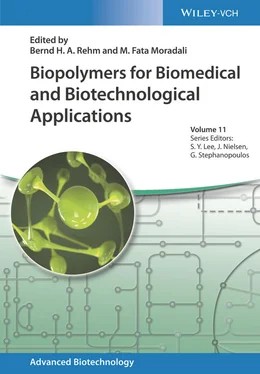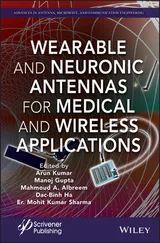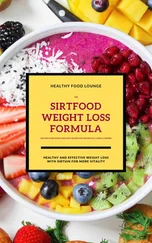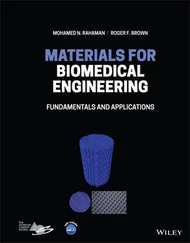Chitinous polysaccharides are also used as dietary fibers in some food products, since they have the capacity of lowering the cholesterol levels by blocking the absorption of fat and cholesterols in organism and are a glucose‐lowering agent [234,250]. In this way, these fibers facilitate the weight and fat loss and have a control over nutrition [234]. For example, there are several reports showing that the addition of fungal CGC as a fiber in food formulations has a beneficial effect in the development of obesity and diabetes and in the treatment of heart diseases [242,243,245] (Table 2.4).
Chitosan is also known to be beneficial for food preservation as a coating for food packaging, acting as an inhibitor of microbial growth [207].
2.7.3.4 Other Applications
Chitosan and CGC are used as a component of some cosmetic products such as hand and body creams, hair care products, or toothpaste. For example, chitosan protects hair from mechanical damage and exhibits an anti‐electrostatic effect on hair. Other chitosan benefits on cosmetic formulations include the water resistance and sun irradiation protection of chitosan emulsions, activation of fibroblasts, collagen deposition improvement, antiseptic properties, and skin protection from microbial infections [207,235]. Similar to chitosan, A. niger CGC is also already used as a natural scaffold for skin moisturization and rejuvenation [247,248].
In textile industry, chitin fibers are also used despite their low tensile strength. In this way, chitin is usually used as a coating material for cellulosic, nylons, cotton, and wool fibers. The use of these modified fibers includes the production of wound dressings, medical textiles, sanitary absorbents, underwear, and waterproof textiles [207].
Chitinous polysaccharides are antimicrobial and have metal ion absorption capacity, features that make these biomaterials also valuable to agricultural products. These polysaccharides are considered valuable alternatives to synthetic chemical agents (bactericides), due to their antibacterial activity. There are several reports showing the role of chitinous polysaccharides in some fruit and vegetable resistance against fungal infections [207,217,224] (Table 2.4). Moreover, it was also reported that chitin can retain nutrients in the soil [234]. Another application of chitinous polysaccharides in agriculture is as a metal and mineral absorbent for the clarification of wines [253].
The metal absorption capacity of chitinous polysaccharides also enables their use in wastewater treatment and bioremediation. For example, chitosan and CGC have the ability to remove copper, nickel, zinc, or cobalt ions from wastewater [241,254].
2.8 Microbial Polysaccharides: A World of Opportunities
Microbial polysaccharides are characterized by a range of valuable properties that render them suitable for broad areas of applications, including high‐value market niches like cosmetics, pharmaceuticals, and biomedicine. Such biopolymers often possess novel or improved properties compared with synthetic polysaccharides, as well as those obtained from other natural sources (e.g. plants, algae, and animals). Besides their already established uses mostly as rheology modifiers, texturing agents, and bioemulsifiers, many microbial polysaccharides are currently arising as relevant bioactive materials displaying antioxidant, antitumor, immune enhancer, antiaging, and cholesterol lowering, which render them potentially suitable for the development of novel pharmaceuticals, nutraceuticals, and cosmetic products. Moreover, there is intense research related to their use in biopolymeric structures (e.g. hydrogels, bionanocomposites, etc.) possessing advantageous properties compared with other commercial materials. There are a growing number of reports on the isolation of new microbial sources that synthesize polysaccharides with distinctive properties, which may translate into the development of novel biomaterials or active drugs. Therefore, microorganisms represent a still underexplored source of products that, given the current research interest in their study, will surely translate into high‐value novel products, particularly for the pharmaceutical and nutraceutical industries.
The authors acknowledge the Unidade de Ciências Biomoleculares Aplicadas (UCIBIO), which is financed by national funds from FCT/MCTES (UID/Multi/04378/2019). Diana Araújo and Patrícia Concórdio‐Reis acknowledge FCT/MCTES for fellowships SFRH/BD/140829/2018 and SFRH/BD/131947/2017, respectively.
1 1 Moscovici, M. (2015). Present and future medical applications of microbial exopolysaccharides. Frontiers in Microbiology 6: 1012.
2 2 Rehm, B.H.A. (2009). Microbial Production of Biopolymers and Polymer Precursors: Applications and Perspectives. Caister Academic Press.
3 3 Rühmann, B., Schmid, J., and Sieber, V. (2015). Methods to identify the unexplored diversity of microbial exopolysaccharides. Frontiers in Microbiology 6: 565.
4 4 Freitas, F., Alves, V.D., and Reis, M.A.M. (2011). Advances in bacterial exopolysaccharides: from production to biotechnological applications. Trends in Biotechnology 29 (8): 388–398.
5 5 Cress, B.F., Englaender, J.A., He, W. et al. (2014). Masquerading microbial pathogens: capsular polysaccharides mimic host‐tissue molecules. FEMS Microbiology Reviews 38: 660–697.
6 6 Freitas, F., Torres, C.A.V., and Reis, M.A.M. (2017). Engineering aspects of microbial exopolysaccharide production. Bioresource Technology 245: 1674–1683.
7 7 Yildiz, H. and Karatas, N. (2018). Microbial exopolysaccharides: resources and bioactive properties. Process Biochemistry 72: 41–46.
8 8 Yu, Y., Shen, M., Song, Q., and Xi, J. (2018). Biological activities and pharmaceutical applications of polysaccharide from natural resources: a review. Carbohydrate Polymers 183: 91–101.
9 9 Roca, C., Alves, V.D., Freitas, F., and Reis, M.A.M. (2015). Exopolysaccharides enriched in rare sugars: bacterial sources, production and applications. Frontiers in Microbiology 6: 288.
10 10 Freitas, F., Alves, V.D., and Reis, M.A.M. (2014). Bacterial polysaccharides: production and cosmetic applications. In: Polysaccharides: Bioactivity and Biotechnology. Part III. Bioactive Polysaccharides (eds. J.‐M. Merillon and K.G. Ramawat), 1–24. Germany: Springer‐Verlag GmbH.
11 11 Rehm, B.H.A. (2010). Bacterial polymers: biosynthesis, modifications and applications. Nature Reviews in Microbiology 8: 578–592.
12 12 Kumar, A., Rao, K.M., and Soo, S. (2018). Application of xanthan gum as polysaccharide in tissue engineering: a review. Carbohydrate Polymers 180: 128–144.
13 13 Patel, A. and Prajapati, J.B. (2013). Food and health applications of exopolysaccharides produced by lactic acid bacteria. Advances in Dairy Research 1: 2.
14 14 Amado, I.R., Vásquez, J.A., Pastrana, L., and Teixeira, J.A. (2016). Cheese whey: a cost‐effective alternative for hyaluronic acid production by Streptococcus zooepidemicus. Food Chemistry 198: 54–61.
15 15 Prajapati, V.D., Jani, G.K., and Khanda, S.M. (2013). Pullulan: an exopolysaccharide and its various applications. Carbohydrate Polymers 95: 540–549.
16 16 Schmid, J., Meyer, V., and Sieber, V. (2011). Scleroglucan: biosynthesis, production and application of a versatile hydrocolloid. Applied Microbiology and Biotechnology 91: 937–947.
17 17 Srikanth, R., Siddartha, G., Reddy, C.H.S.S.S. et al. (2015). Antioxidant and anti‐inflammatory levan produced from Acetobacter xylinum NCIM2526 and its statistical optimization. Carbohydrate Polymers 123: 8–16.
18 18 Gugliandolo, C., Spanò, A., Lentini, V. et al. (2013). Antiviral and immunomodulatory effects of a novel bacterial exopolysaccharide of shallow marine vent origin. Journal of Applied Microbiology 116: 1028–1034.
Читать дальше












